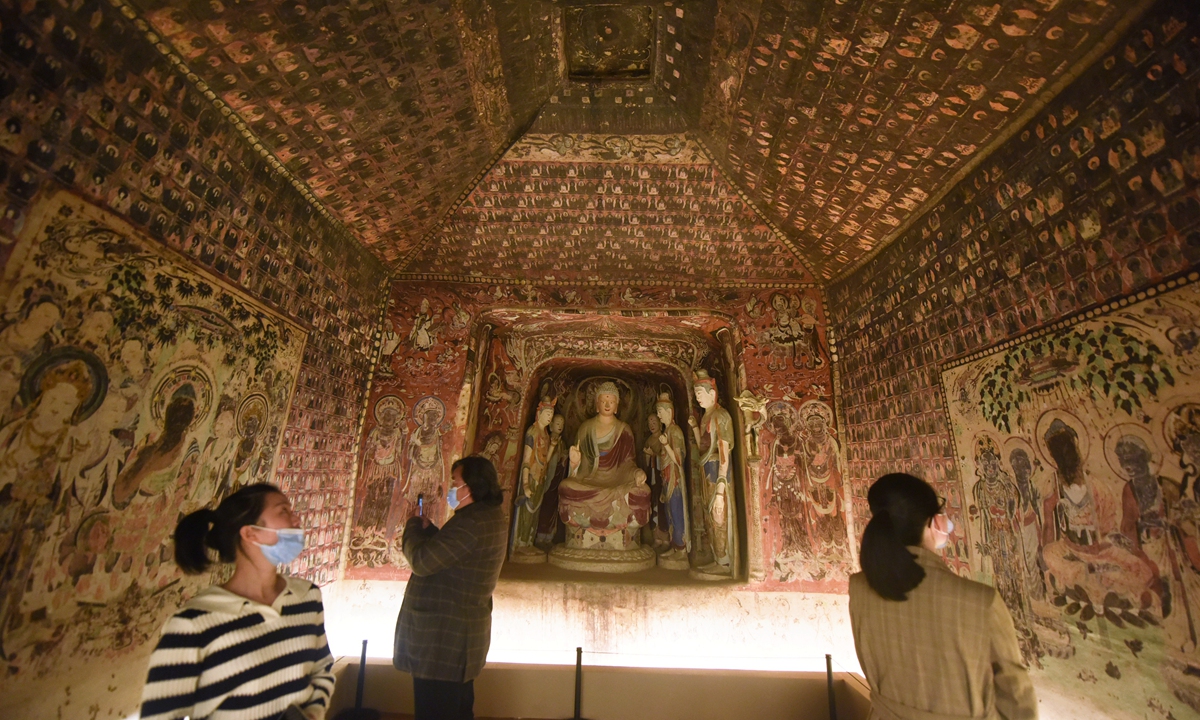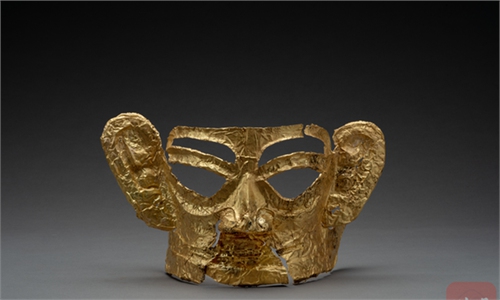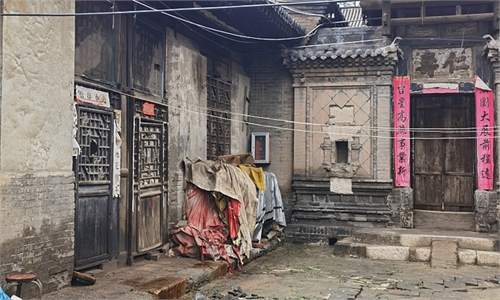China mulls building 10-15 cultural heritage parks, nurturing talent in Five-Year Plan on relic protection

Visitors look at a replica of a cave in the Dunhuang Mogao Grottoes reproduced with 3D digital printing technology at the Zhejiang University Museum of Art and Archaeology in Hangzhou, East China's Zhejiang Province, on November 2, 2021. Photo: VCG
China's State Council has approved a Five-Year Plan on cultural relics protection for 2021-25, the first national-level Five-Year Plan in this area, which is expected to lead to more national resources, social capital and public attention to protecting the heritages that preserve the Chinese civilization in diverse facets.
The Five-Year Plan aspires to create a preventative mechanism rather than relying on emergency rescues to protect the relics, Li Qun, head of the National Cultural Heritage Administration (NCHA), said at a press conference on Wednesday.
The plan balances protection and development, and highlights the role of technological innovation and talent nurturing, Li said, specifying a goal of increasing research fellows on cultural relics by 25 percent by 2025.
In 2010, authorities announced the first batch of national archaeological parks, which have become important places for people to get a deeper understanding of Chinese civilization, NCHA official Lu Qiong told the press conference.
China is currently home to 36 national archaeological parks, among which 11 are UNESCO World Heritage sites. The country aims to build 10 to 15 more during the next five years, Lu said.
Tian Lin, an expert on ancient architecture, told the Global Times that with the national guideline, more specific measures will be made accordingly, and funding and resources can be channeled to relic protection.
The recent downpours in North China's Shanxi Province have threatened many local heritages with 1,783 registered cultural relics reporting damages. The Pingyao ancient city was among them.
The disaster exposed the lack of daily maintenance for many relics that were not as well known as the Pingyao ancient city. The guideline, proposing a preventative protection mechanism, is targeting at the problem, Tian said.
Li said at the press conference that the disaster also prompted relevant authorities to consult with emergency response departments to enhance disaster relief for relics.
The Five-Year Plan asks basic level governments to enhance monitoring of cultural relics, make emergency plans, and carry out comprehensive checks and maintenance of relics. For low-level and unregistered relics, it is urgent to build grass-roots protection forces, and inviting social resources in is one method, Li noted.
Cultural relics should be well maintained to really benefit the people, experts said, noting more exhibitions, interactive archaeological projects as possible ways to engage the public to better understand China's cultural relic protection and how it can benefit the world, experts said.
Lu said at the press conference that China has made progress in joint relic protection, archaeology and exhibition as one facet of the China-proposed Belt and Road Initiative.
Amid the COVID-19 pandemic, digital tools have been widely applied, Lu said, giving examples like the "Parallel Space: Meet the Terracotta Warriors in Greece," livestreaming of archaeological discoveries at Sanxingdui Ruins to the world, and the Asian Dialogue for Cultural Heritage Conservation via video link.
In the next five years, China will enhance international communication of domestic cultural relic protection and actively participate in global governance to rescue threatened relics, break up illegal trafficking and promote retrieval of cultural relics lost overseas.


